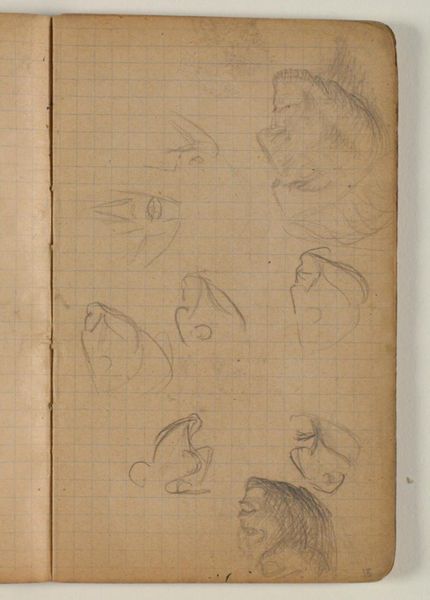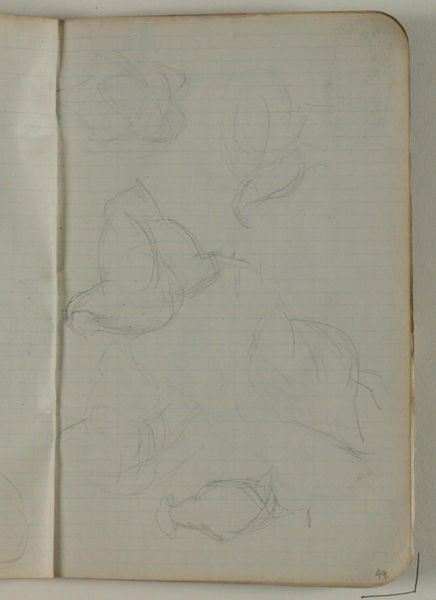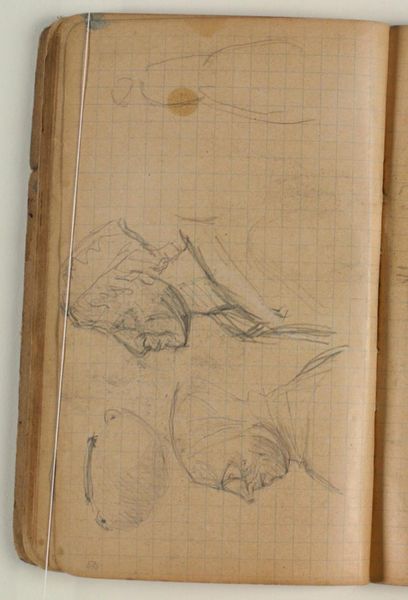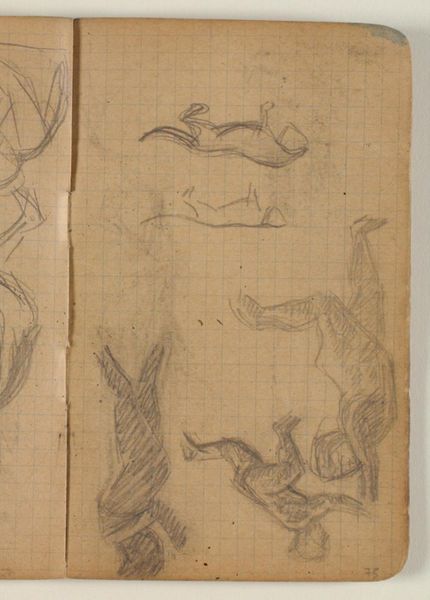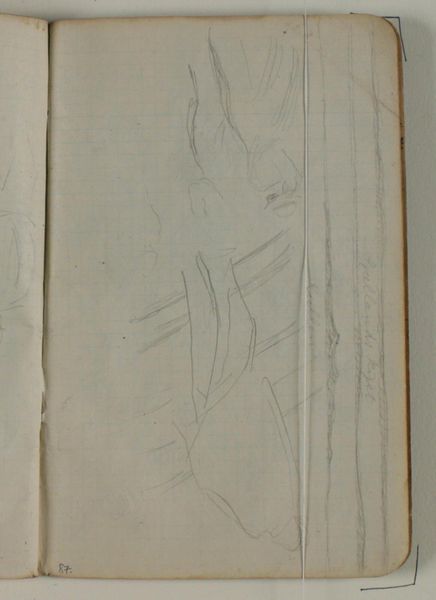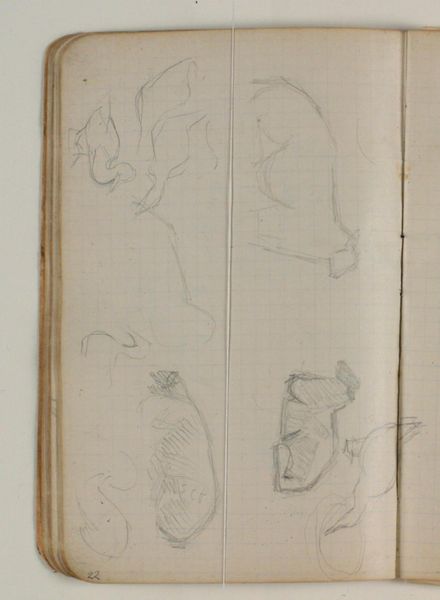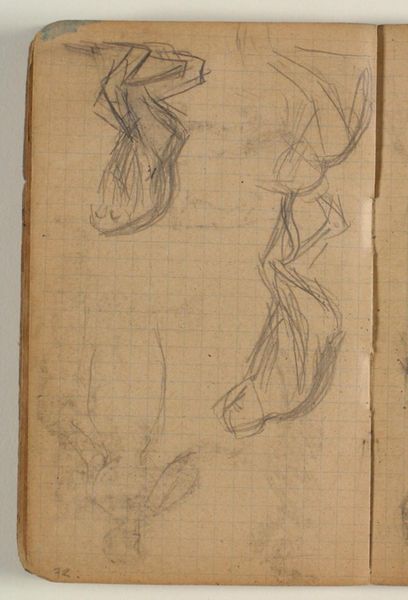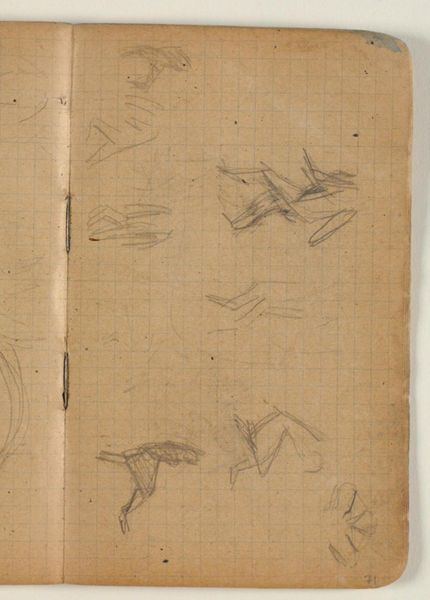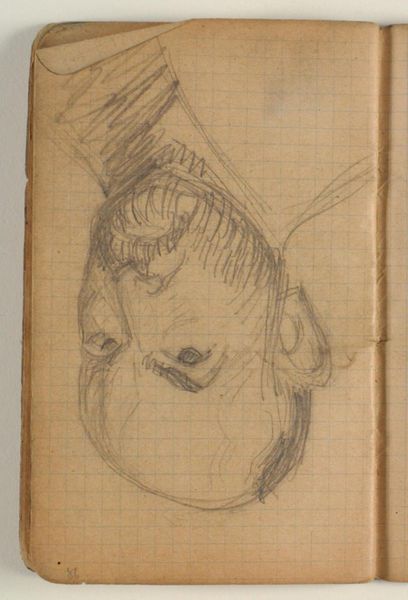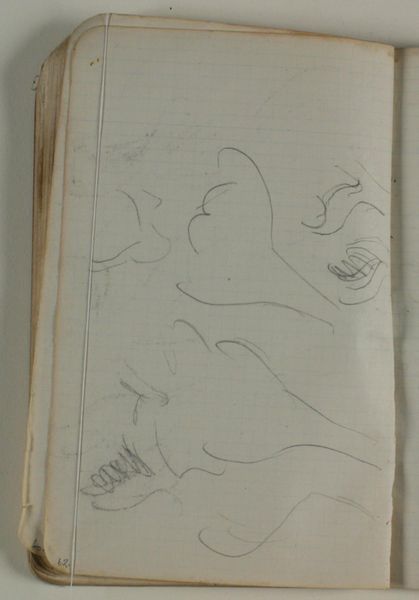
drawing, paper, pencil
#
portrait
#
drawing
#
figuration
#
paper
#
pencil
#
academic-art
#
modernism
Dimensions: 163 mm (height) x 97 mm (width) (bladmaal)
Curator: Sobering, I'd say. These sketches feel quite vulnerable in their rawness. Editor: Here we have "Figurskitser," or "Figure Sketches," by Niels Larsen Stevns, created around 1906. It’s currently held at the SMK, the National Gallery of Denmark. Curator: It certainly looks like a page torn straight from a sketchbook. The use of simple pencil on paper creates a sense of immediacy. I find myself wondering about the accessibility of sketching materials at that time. Who had access to sketchbooks and the training to use them? Was sketching seen as a pastime or part of professional training? Editor: Interesting. From a historical standpoint, these sketches give us a glimpse into the artist's process and the academic tradition. It’s fascinating to consider how institutions like the Danish academy, perhaps, shaped artistic output and training during the early 20th century. What public role did sketching play in Stevns’ larger artistic project? Curator: Right, it raises questions about the commodification of the artistic process. Did Stevns intend these sketches to be seen publicly, or were they meant as private studies? If he showed them, how did that change their value? There is a relationship between the kind of paper he used, with printed grids, and the types of figures he selected, because all those decisions end up affecting his status. Editor: The grid adds an interesting element. Was this typical for sketchbooks of the time, offering the artist a structural guide? It really makes you question Stevns' training, and if these rapid figures ended up in another artwork that enjoyed official success and acceptance. It offers us an intriguing contrast between freedom of expression and academic discipline. Curator: It highlights the layers of decisions that are baked into even seemingly spontaneous work like this. Editor: Indeed. This quick study gives so much room to imagine. Curator: To ponder, perhaps, the labor that's usually invisible within artworks accepted and admired by the establishment.
Comments
No comments
Be the first to comment and join the conversation on the ultimate creative platform.
